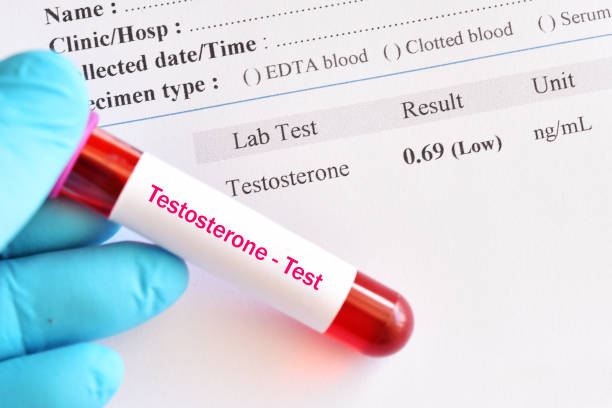Introduction
Today, in this article, we discuss the signs of low testosterone in males over 40 years old. Optimizing testosterone levels is crucial for maintaining health and well-being as men age. Low testosterone symptoms in men over 40 can take on many different forms, but the impact on quality of life can be significant. Familiarity with these symptoms is crucial for early recognition and treatment. Low testosterone, also called hypogonadism, can result in physical, emotional, and sexual health problems.
In this article, we will discuss the signs to look out for, as well as the treatment options available. Identifying these signs can allow men to actively seek remedies for decreased levels of testosterone to promote their well-being.
What Testosterone Does — And What It Doesn’t

Testosterone is an essential hormone that plays a key role in maintaining male health. It drives the development of male characteristics, including muscle mass, bone density, and body hair. It also impacts mood, energy levels, and sexual function. Testosterone production starts to decline around age 30 as a natural part of the ageing process. This decline can result in several symptoms that may be unrecognized. Knowing how vital testosterone is to the male anatomy highlights the need for identifying low testosterone signs in men over 40.
Early identification may enable effective treatment and an improved quality of life.
Symptoms of Low Testosterone
Awareness of the Signs of Low Testosterone: Early Intervention. The most common signs include a significant drop in libido or sexual desire. Men can also have trouble with erections or less satisfying sex. Signs of low testosterone levels include physical symptoms such as fatigue, loss of muscle mass, and increased body fat. Emotional symptoms, such as depression, irritability, and impaired concentration, can also develop. If you experience any of these symptoms, see a healthcare professional for an evaluation. An open and comprehensive evaluation can assess whether low testosterone is to blame in these cases.
Altered Mood and Activity Levels
In men over the age of 40, low testosterone is one of the most important indicators affecting mood and energy levels. Fatigue is a common issue in men with low testosterone, which can make even the simplest of tasks feel like a chore. Fatigue can be a factor in motivation (or loss of) and overall quality of life. In addition, mood swings, anxiety, and depression are prone to occur in those with low testosterone levels. Such mood swings can strain relationships and cause a person to withdraw socially.
You should also pay attention to these personality changes — they could be signs of low testosterone. This may lead to increased fatigue or emotional imbalance; therefore, it is helpful to consult a doctor for advice on these concerns.
Weight Gain and Muscle Loss
9. Weight Gain or Muscle Loss. Another sign of low testosterone is changes in body composition, such as body weight or muscle mass. Maintaining lean muscle mass is important, and testosterone plays a role in this process. Men may have more trouble building and maintaining muscle as their testosterone levels decline. Consequently, body fat can rise significantly, especially around the belly. Also, low testosterone can make you unsure of your physical performance and reduce your stamina in your workouts.
Understanding these physiological alterations is crucial for diagnosing potential hormonal irregularities. If you notice such changes in body composition, talk to a healthcare provider for further evaluation and guidance.
Sleep Disturbances
A disturbance in sleeping patterns is yet another common symptom of low testosterone in men over the age of 40. Low testosterone is also associated with insomnia, and people with low testosterone often report difficulty falling or staying asleep. This can result in prolonged exhaustion throughout the day, leading to increased mood swings and fatigue. Chronic insomnia, another sleep disorder, is also higher among men with low testosterone levels, as is sleep apnea, a condition that disrupts breathing during sleep.
Treating sleep problems is crucial for overall health, and dissatisfaction with sleep can significantly impact how much people enjoy their lives. If you deal with chronic sleep disturbances, it’s wise to discuss it with a health professional to rule out possible underlying causes, such as low testosterone levels.
Reduced Bone Density

Low testosterone can also lead to reduced bone density, raising the risk of osteoporosis and fractures. Testosterone is essential for bone health, stimulating bone mineralization and maintaining bone density. With a decrease in testosterone levels, men will also note a weakening of bones, leading to an increased risk of fractures.
This is especially worrying for men aged 40 and over, a risk that increases with age. It is not only important for the muscles but also for bone health, which is closely tied to healthy testosterone levels. If you’re concerned about bone density or have a family history of osteoporosis, consult a healthcare professional to discuss your symptoms and risk factors.
How to Test for Low Testosterone

If you think you are experiencing low testosterone symptoms as a male over 40, please seek a medical evaluation. A health care professional can order blood tests to check testosterone levels, which are usually taken in the morning when levels are at their peak. The outcome will determine whether your count is within normal limits or whether further investigation is necessary. Apart from testosterone levels, a comprehensive analysis may involve examining various aspects, including hormone disturbances, lifestyle factors, and underlying health conditions. Low testosterone diagnosis through testing is an important step towards creating an appropriate treatment plan.
How to Prevent Low Testosterone: Lifestyle Changes
For example, in some cases, lifestyle changes can improve testosterone levels and help with low testosterone symptoms. Both strength training and regular physical exercise stimulate the production of testosterone, promoting overall well-being and physical fitness. A balanced, nutritious diet rich in micronutrients, particularly those with a positive effect on hormones, such as zinc and vitamin D, is also important. Stress-relieving methods like meditation and yoga can additionally have a good impact on testosterone levels.
However, read below for some old, reliable solutions that will help you treat symptoms of low testosterone. Medical treatment options can be enhanced when combined with these changes.
Options for Hormone Replacement Therapy
Among the options for treating low testosterone is hormone replacement therapy (HRT) for men who have been diagnosed with low testosterone. HRT uses testosterone to treat the condition via injectables, patches, gels, or pellets. This type of therapy seeks to bring testosterone levels back to a healthy range, thereby reducing symptoms and improving quality of life. It is essential to consult with a healthcare provider about the potential benefits and risks of HRT, as each person responds to treatment differently.
It’s also recommended that testosterone levels and general health be measured regularly during HRT to ensure that the treatment is producing optimal results and to avoid negative side effects from either an excess or insufficient level of hormone in the body.
Alternative treatments close to home
Some men may consider alternative treatment methods for treating low testosterone, as well as replacing hormones. Supplement solutions: Natural supplements, such as fenugreek, ashwagandha, and DHEA, have also gained recognition for their potential use in boosting testosterone levels. That said, it’s essential to use these supplements with caution and consult a healthcare provider before starting any new regimen. Alternative therapies such as meditation, acupuncture, and herbal remedies offer holistic approaches to treating hormonal imbalance. Staying up to speed with the information and maintaining a good relationship with a healthcare professional will assist you in navigating the best treatment options for your individual needs.
When to Seek Medical Advice
If you see any symptoms of low testosterone in men over forty, it’s important to get medical advice immediately. This can lead to a better quality of life and outcome if treatment is started early. A healthcare provider can assess your symptoms, conduct any necessary tests, and suggest appropriate treatment options. Feel free to ask about your concerns, as open communication is key to treating hormonal imbalances effectively. Keep in mind that you are not the only person; in fact, many men face this kind of problem. Asking for help is a positive step toward regaining control over your health and quality of life.
Conclusion
East or west, male testosterone levels decline from age 40. Men can proactively manage hormonal changes by recognizing the symptoms and consulting with a healthcare provider for evaluation and guidance. There are also medical treatments that can restore testosterone levels and improve quality of life. However, do not forget that your health comes first, and taking steps to improve it can make a world of difference. Do not be afraid to get help and find the best medication that works for you. The first step towards a happier, healthier you is taking charge of your well-being.





